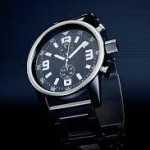There are a lot of factors that can cause Windows computers to slow down, and junk files are one of them. Junk files include apps, junk internet files, system error logs, temporary files produced by cookies and the internet cache, etc. They not only slow down your system, but if they are not routinely cleared out, they also take up more space.
Fortunately, there are several approaches, as well as various Best Junk File Cleaners for Windows 11, that you can use for clearing out these junk files and freeing up space. The method you choose to remove junk files will determine how much time and effort you have to put in. It could be time-consuming to remove junk files if you are not familiar with Windows 11’s simplified interface. Therefore, if you require help removing junk files from Windows 11, these are all of your options.
Types of Junk Files
- Temporary Files: These temporary files are created by apps and the system. Sometimes they are not, even though they are automatically removed with every restart. To clear the PC of clutter, you will need to physically search for and remove it.
- Recycle Bin Files: These are the files that have been deleted but are still in the recycle bin. Which is helpful in giving you the opportunity to recover deleted data.
- Temporary Internet Files: These files, also known as browser caches, are generated by the browser to reduce the time it takes for a page to load.
- Thumbnails: These files facilitate the fast loading of picture and video thumbnails. It may take a little longer for the images and video to load if you delete them.
- Application Remainders: Upon uninstalling software, certain related files may remain in place. To keep the PC tidy, these files should be removed because they are useless.
- Upgrade log files for Windows: Windows keeps track of all the actions taken while updating. These files are useful for troubleshooting, but if Windows functions properly after the upgrade, you can remove them.
How to Delete Junk Files from Windows 11?
There are various methods that can be used to delete junk files from Windows 11 computers. Here, we will explain different methods that you can use to clear junk files.
1. Delete Temporary Files
Clearing up the temporary files is one of the very first approaches that you should apply. Here’s how you can do it:
- To open the Run window, press Windows + R.
- Put in %temp%, and then press Enter.
- It will take a few seconds to receive a folder containing temporary files.
- Use the keyboard shortcut Ctrl + A to select all files, then press the Delete key.
2. Clear out the Recycle Bin.
Emptying the recycle bin is another popular—yet often ignored—method for clearing out junk files. The Recycle Bin holds every file you remove from the computer. They remain here until the recycle bin is completely empty. Here are the steps to cleaning it:
- Search for the Recycle Bin on the Windows desktop.
- To open it, double-click on it.
- Cross-check every file in the Recycle Bin before emptying it, as you will no longer be able to manually restore files afterward. You will need to use data recovery software to get them back.
- Once you have decided which files and folders to remove, click the Delete button.
- All you have to do is confirm the action.
3. Employ the Cleanup Features
If you use Windows 11, you can clean junk files by following Cleanup recommendations in addition to clearing the Recycle Bin. To do so, take the following steps:
- To open Windows settings, press Windows + I.
- To see the cleanup recommendation, double-click System > Storage.
- Allow the scan to finish, and it will display large, unnecessary, and temporary files that you can remove to clear up disk space.
- After selecting them, select “Clean up.”
- This will assist in managing temporary files. You can also observe how much space other programs and Apps & Features are taking up.
- By selecting the Storage Sense option, you can also Configure Storage Sense.
This will ensure that Windows runs without any issues. To clean files with Storage Sense, turn on the option > check the box next to Keep Windows running smoothly by automatically cleaning up the temporary system and app field > Then turn on Storage Sense under Automatic User Content Cleanup.
4. Run Disk Cleanup
Disk Cleanup is an integrated feature of all Windows versions that helps you get rid of junk files, temporary files, and extra data. You can get rid of thumbnails, temporary internet files, and caches with its assistance. Here’s how you can do it.
- Search for “Disk Cleanup > Select” in the Windows search bar, then click “Open.”
- After making your selection, click OK to begin scanning the drive.
- You will not receive an endless list of undesirable files that you can delete. After making your file selections, click OK.
- After choosing Clean up system files and selecting the drive once more, Windows will take a few seconds to determine how much space you could recover by removing these useless files.
- Select the files you wish to delete, then click OK to proceed with the Delete Files option.
5. Utilize a third-party application.
While the methods listed above have been approved by Microsoft, there are other ways to get rid of unnecessary files from your computer. Using third-party tools, you can also get rid of any kind of useless or unnecessary data. You can find a variety of the best junk file cleaners for Windows 11, that you can use to get rid of unwanted junk files from your computer.
Conclusion
You can keep your Windows 11 computer operating at its peak performance and free up space on your hard drive by deleting junk files. It is simple to do, and if you follow the instructions in this article, you will quickly have your system operating at peak performance. With a few simple clicks, you can reclaim valuable storage space and resume using your computer’s speed and smoothness.


